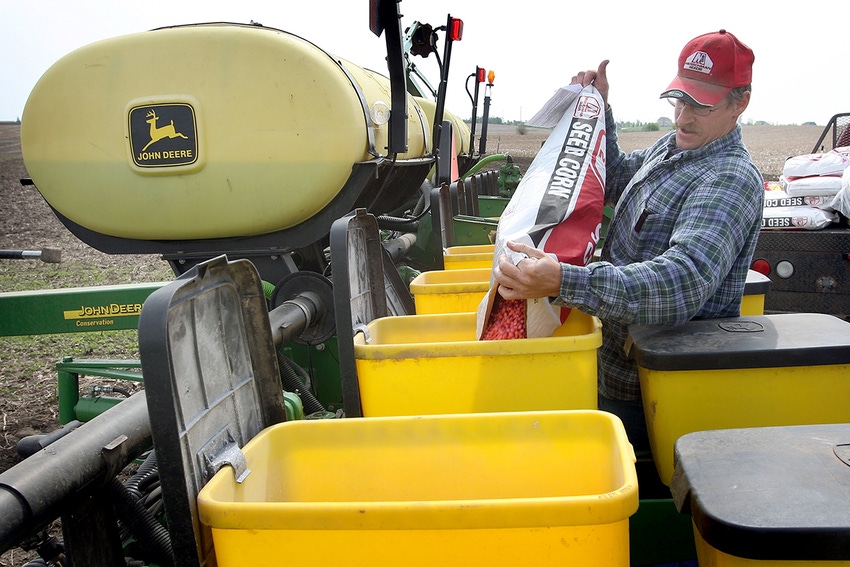April 7, 2016

Once again, rainfall hindered corn planting during the month of March in Louisiana. Under ideal conditions, we like to have a significant amount of corn planted during this time.
Planting date is a critical component in maximizing corn yield and profitability. In Louisiana, we start to get concerned about losing yield potential if corn is not planted by April 10 in the southern half of the state and by April 20 in the northern half of the state.
However, corn productivity or yield does not abruptly fall off a cliff when we reach or go past those two dates. For example, corn fields were hailed out last year in Morehouse and West Carroll parishes and were not replanted until the first week of May and final yields from those irrigated fields were very respectable.
Corn planting date field studies were conducted in 2009, 2010, and 2011 in Mississippi using furrow irrigation. Results from the three-year study found that yields were reduced about 0.8 percent for each day past the optimum time to plant corn.
Based on these numbers, corn planted on May 1 — 10 days later than the last optimum planting date of April 20 for the northern portion of the state — would suffer a 8 percent (0.8 percent x 10 days) yield reduction.
The results in Mississippi are very similar or not substantially different from studies conducted in the Corn Belt. Two Corn Belt studies found that yield losses are about 0.5 percent, 0.7 percent, and 0.9 percent per day of delay for the first, second, and third 10-day periods past the end of the optimum planting window.
Therefore, there is very little justification to abandon corn if planting is slightly delayed past the optimum dates.
Oftentimes we are worried about high temperatures and the effect on corn pollination if we get planted on the late side.
We know that pollination is a critical period for corn development. Pollen shed occurs over a lengthy time period. Silks must emerge and be fertilized by viable pollen.
Temperatures greater than 95 degrees F with low relative humidity will desiccate the exposed silks, but not impact silk elongation rates greatly.
Pollen is no longer viable once temperatures reach the mid-90s or greater, especially with low relative humidity. However, pollen shed usually occurs from early to mid-morning when temperatures are lower.
We know that drought stress slows silk elongation but hastens pollen shed, causing pollen shed to occur before silk emergence.
The good news is that pollen from one plant is adequate for 10 other plants, which enables a means of compensation and improves the rate for fertilization in stressful environments. However, with adequate soil moisture through irrigation the impact of high temperatures on corn pollination will be negated.
Dan D. Fromme, Ph.D., is the Associate Professor/State Specialist for Cotton, Corn and Grain Sorghum with the LSU AgCenter. Email: [email protected].
You May Also Like




